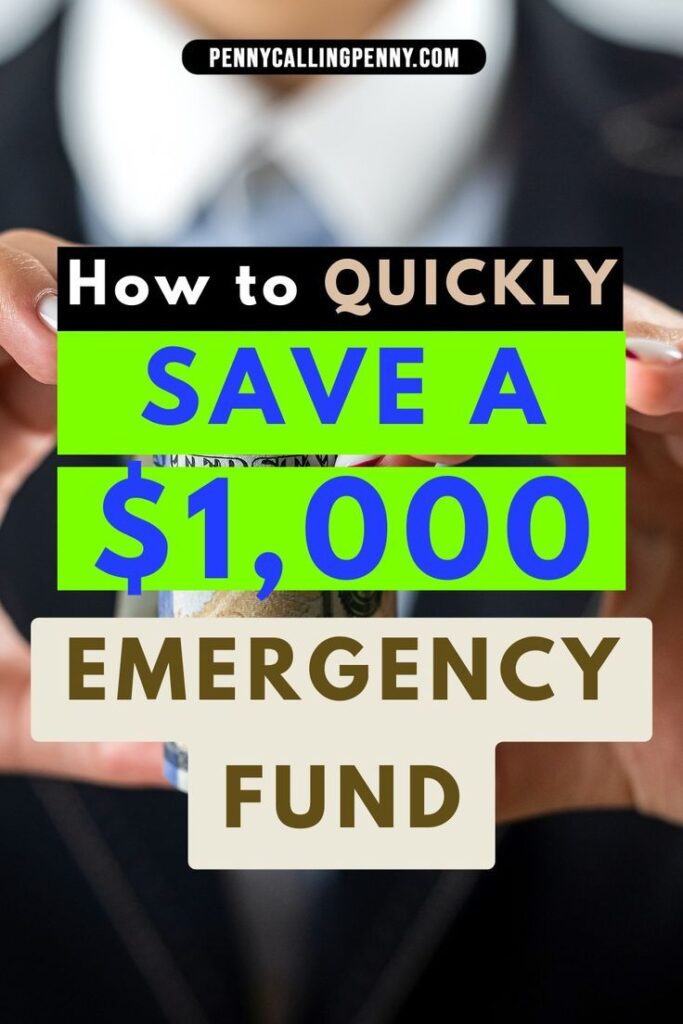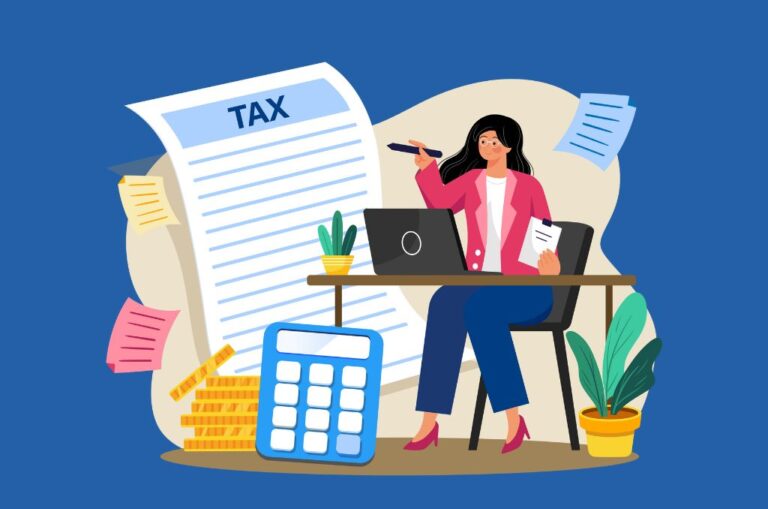Managing finances in the real world is quite different from what we were taught in textbooks. Actually there’s a lot that we still need to learn. With this understanding, Taylor Price shares her story of dealing with financial emergencies and what you can do differently.
Imagine this: You wake up to a pipe bursting in your home, or maybe you lose your job unexpectedly due to company downsizing.
Financial emergencies like these can strike at any moment, leaving you scrambling to cover unexpected costs. But what if you were prepared?
By taking proactive steps to protect your finances, you can mitigate the impact of these curveballs and protect your financial well-being.
Whether you’re facing a sudden medical expense, job loss, or natural disaster, being proactive can mean the difference between weathering the storm or drowning in debt.
My Financial Journey To Becoming A Financial Activist
I was born and raised in Saugerties, New York. I began college at SUNY Ulster as a pre-med student, but quickly found that long hours hunched over microscopes made some pre-existing back problems worse.
After taking advice from my mom to try finance, I switched my major, transferred to SUNY Albany, and started a blog focusing on personal finance. That led to a YouTube channel, and then a TikTok which I started in December 2019.
When I began, I mostly talked about investing. But after I saw how the COVID pandemic affected people’s finances, I decided to expand my subject matter, taking on a more holistic approach to managing personal finances.
That holistic approach, or what I call Finesse (financial essentials), is focused on managing your money in a way that considers both the financial and non-financial aspects of your life.
I have lupus and severe scoliosis that requires a spinal fusion, which doesn’t always allow me to function normal hours. Some days, I have to take off and spend time recovering.
With the holistic approach, I know that having a larger emergency fund of six to nine months for me is more secure than the typical three to nine months because of my medical conditions.
For people with health conditions, having a fully funded emergency fund is one of the smartest things you can do.
I believe doing something as simple as writing down your savings goals and asking yourself what you’re saving for, how long you have, and what you’ll do if you don’t reach a specific goal can help better your chances of achieving financial objectives.
When you look at personal finance holistically, you’re able to see how the different parts of your life interact with each other and affect each other.
For example, if you have a long-term relationship that’s causing stress or leading you down the wrong path, this will probably affect other areas of your life too—including your finances.
This approach inspired me to develop the Money Tree Method, a framework for nurturing your finances from the ground up.
Created over several years, the Money Tree Method offers straightforward financial concepts and practical money management practices to incorporate into your daily life
The Money Tree Method
Step 1: Plant Your Seed — Embrace a growth mindset and commit to learning personal finance.
Step 2: Grow Your Roots — Save for emergencies and set up long-term savings accounts like a 401k or IRA.
Step 3: Strengthen Your Trunk — Focus on your primary income source and explore ways to increase earnings.
Step 4: Protect Your Bark — Get the right insurance coverage to safeguard your finances.
Step 5: Fight Termites — Tackle debt strategically to prevent it from eating away at your financial core.
Step 6: Branch Out — Invest wisely and diversify your investments to thrive in any economy.
Step 7: Nurture Your Leaves — Monitor income and expenses, making conscious spending choices.
Step 8: Fertilize Your Growth — Maintain a great credit score and build financial resilience.
Here is a free guide to learn more about the money tree method.
Gen Z Is Lacking Financial Literacy
Financial literacy is essential, yet many schools fail to provide a comprehensive financial education. From my experience in school, there were significant gaps in what was taught, leaving many of us unprepared for real-world financial responsibilities.
There were no conversations around budgeting, which is fundamental for managing money effectively. We weren’t taught how to file taxes, a skill every adult needs. There was no guidance on what to do when you lose parental insurance coverage and need to find your own health, dental, and vision insurance. I had to get my own insurance at 18 when my parents’ coverage stopped.
The benefits and risks of credit cards were never discussed. Why is it beneficial to get a credit card when so many people struggle with debt? This was a significant question I had that went unanswered.
There were no lessons on investing, a crucial component of growing your wealth from a young age.
Assess Your Financial Health
The first step in preparing for financial emergencies is to take a hard look at your current financial situation. Creating a budget is crucial to understanding where your money is going and identifying areas where you can cut back on expenses.
Carefully track your income and expenses, accounting for everything from housing costs and utilities to groceries and entertainment. This will give you a clear picture of your financial health and help you identify opportunities to increase your cash flow.
One key area to focus on is managing debt. High-interest loans and credit card balances can quickly spiral out of control, draining your resources and leaving you vulnerable in an emergency. Make a concerted effort to pay down these debts as quickly as possible, freeing up more of your income for savings and other financial goals.
By taking a proactive approach to assessing and optimizing your financial health, you’ll be better positioned to weather any unexpected storms that come your way.
With a clear understanding of your income, expenses, and debt, you can make informed decisions about where to allocate your resources and how to prioritize your financial goals.
Think of your finances as a money tree. It has roots, bark, trunk, leaves, that all keep the tree healthy and happy.
You need to have the same systems set up in your finances.
Building An Emergency Fund
After assessing your financial health, the next crucial step is to build an emergency fund.
An emergency fund is like a financial safety net that covers unexpected expenses, such as medical bills, car repairs, or job loss. Think of your emergency fund as the roots for your tree, they have to be there to keep the tree from falling down. This works the same way with your finances.
Here’s how to build and maintain an effective emergency fund:
- First set your savings goal. Aim to save three to six months’ worth of living expenses. This amount provides a cushion to cover your needs in case of an emergency.
- Try to set aside a percentage of every paycheck, even if it’s a small amount. Saving regularly helps build the habit. Automate it by setting up direct deposit into a separate savingsaccount.
- Take advantage of windfall income. Tax refunds, work bonuses, gift money, etc. can provide a lump sum to jump start your savings. Don’t let extra funds tempt you to overspend.
- Look for expenses you can cut back on when money is tight. Reducing discretionary spending for a period allows you to continue growing your emergency fund.
- See if your bank offers “keep the change” programs that round up transactions and deposit the difference into savings. This automatically sets aside small amounts that add up.
The key is to start saving something consistently, even if it seems small. Having an emergency fund brings peace of mind and helps weather dips in income. Automate transfers whenever possible to keep the savings habit going.
If your expenses are $2,000 a month you’ll want to have $6,000-$8,000 saved for emergencies.
If your living expenses are quite low, such as living with roommates, or if you have a chronic illness that requires frequent doctor visits, it’s important to increase your emergency fund. Make sure it covers at least your deductible for health, dental, and vision insurance.
Here’s a pro tip to earn more on your money: Keep your emergency fund in a High-Yield Savings Account (HYSA) to earn more interest while maintaining easy access to your money.
To make this process run smoothly, set up automatic transfers from your checking account to your HYSA.
Here are just a few of the benefits of automating your savings:
1. Easy-peasy: Once you’ve set up the automatic transfer, you don’t have to lift a finger. Your savings will be growing without any extra work from you.
2. Consistency is key: By automating your savings, you’re saving the same amount of money every month. This makes it way easier to budget and plan for your future.
3. Effective AF: Automating your savings is the ultimate hack for developing good financial habits and staying on track towards your goals. You’re way less likely to blow your cash on impulse buys when your savings are growing automatically.
Remember, an emergency fund is not a luxury; it’s an essential component of a solid financial foundation. By setting aside dedicated savings for unexpected events, you can avoid relying on high-interest debt or depleting your retirement accounts in times of crisis.
Consistent contributions, even small ones, will help grow your fund over time.
Want to supercharge your success? Check out my ready made paycheck routine.
Securing The Right Insurance
While an emergency fund can provide a financial cushion, insurance is another critical component of your financial wellness. Insurance is a critical component of financial preparedness. Insurance is like the bark of your tree, keeps you safe from anything that comes your way.
Start by reviewing your homeowners or renters insurance policy to ensure it provides sufficient coverage for your home, personal belongings, and liability.
Health insurance is another essential protection. Evaluate your current plan to understand your deductibles, copays, and out-of-pocket maximums, and ensure it meets the needs of you and your family. Don’t overlook supplemental policies like disability or long-term care insurance, which can provide additional financial security in the event of an extended illness or injury.
Regularly reviewing and updating your insurance policies is crucial to ensure you have the right protections in place.
As your life circumstances change, your coverage needs may shift as well. By investing in comprehensive insurance, you’ll have greater peace of mind knowing that you and your family are protected from the financial fallout of unexpected events.
Here are the key types of insurance to consider:
- Health Insurance: Ensure you have adequate health coverage to avoid massive medical bills. If you’re no longer covered under your parents’ plan, research and select a plan that fits your needs and budget.
- Dental and Vision Insurance: Don’t overlook these coverages. Regular dental and vision check- ups can prevent more significant issues and expenses down the line.
- Auto Insurance: If you own a car, comprehensive auto insurance protects you against accidents, theft, and damage.
- Homeowners or Renters Insurance: Protect your home and personal belongings against disasters, theft, and liability.
Consider additional coverage like auto, umbrella, or business insurance, depending on your specific circumstances and assets.
- Life Insurance: Life insurance is often overlooked but can be a lifeline for your loved ones if the unthinkable happens. Term life insurance is generally an affordable option, providing coverage for a specific period. Permanent life insurance policies, like whole or universal life, offer lifelong protection and may accumulate cash value over time. Life insurance ensures your loved ones are financially secure if something happens to you.
Surrounding Yourself With The Right People
Surround yourself with people who motivate and inspire you. If your current circle doesn’t provide the energy or attributes you admire, it’s time to seek new connections. People who value financial wellness can offer support and guidance.
Starting Your Financial Wellness Journey
When is the best time to begin making conscious efforts toward financial wellness? The answer is now. Starting conversations about money might be uncomfortable, but it’s necessary.
(i) Have a Money Date with Yourself: Treat it like a date where you get to know your finances intimately. Review your spending habits, financial goals, and overall financial health.
(ii) Make it Enjoyable: Combine this activity with something you enjoy, like takeout from your favorite restaurant or a relaxing activity. This approach makes the process less daunting and more engaging.
Preparing for financial emergencies involves building a fully funded emergency fund, securing appropriate insurance, and continually educating yourself about personal finance. By taking these steps, you’ll be better equipped to handle any financial surprises that come your way.


FAQs
How can I prepare for a financial emergency?
Saving enough, budgeting, having adequate insurance coverage and an emergency fund are some of the best ways to protect yourself against financial emergencies.
What insurance should I have?
Typically, one should have life insurance, health, homeowners/renters, and auto insurance. Further there are various other insurance you can have for extra coverage according to your financial situation like umbrella insurance, disability insurance, etc.
How can I rebuild my finances after a financial emergency?
When met with a financial emergency, prepare a new budget reprioritizing your expenses, if possible make additional income sources with side hustles, and make a debt repayment strategy.








